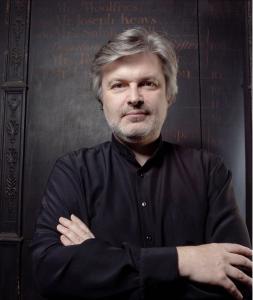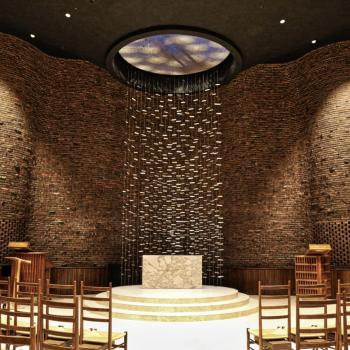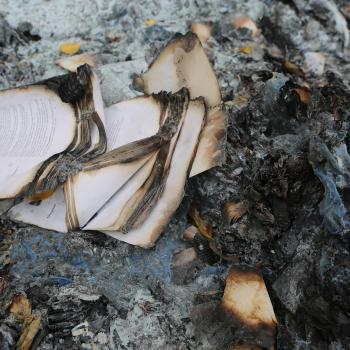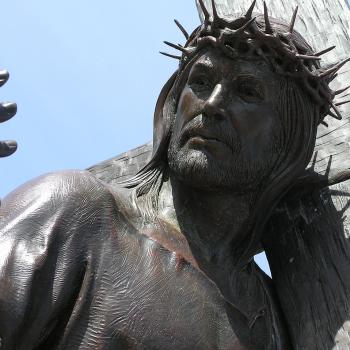By Josh Rodriguez, guest contributor
The world watched in horror as yet another Black man gasped for air, murdered on camera. In those final moments, George Floyd called out to his mother – except his mother was not alive. She had passed away two years prior, giving this cry the transcendent anguish of one who knew he was about to die.
But this was not the only image of death that we saw in 2020, nor was it the last. Today, our Instagram, TikTok, and Facebook news feeds, are flooded with stories of loved ones lost to tragedy: cancer, and car accidents, malnutrition, religious persecution, and systemic injustice all over the world. The horrors of war are literally at our fingertips. There is so much pain.
To further complicate our ability to empathize, these images are interspersed with those of reality TV stars, beach selfies, political memes, and Taco Tuesday deals. We aren’t allowed to be sober or sad for long because the next item we click is a hilarious parody of a popular song. This machine gun-like barrage of emotionally charged headlines and clickbait unsettles, distracts, even numbs our hearts and minds. But you already know that.
An 800-Year-Old Lament
Unless you love medieval European poetry or regularly listen to sacred choral music, you might never have heard of Stabat Mater dolorosa—a graphic 13th century lamentation about Christ’s crucifixion told from his mother’s perspective.
The grieving mother was standing,
weeping, next to the cross
on which her son was hanging.
His groaning soul,
deeply saddened and aching,
was pierced through by a sword.
Stabat Mater offers us a visceral glimpse into the raw torment and profound faith of Mary—the “first disciple.” There are hundreds of musical settings of this rich multi-versed poem.
While the Stabat Mater is associated with the Italian composers Palestrina (16th century) and Pergolesi (18th century), a growing number of 20th and 21st century composers have resurrected this lamentation, revealing it to be a powerful vehicle for “grieving with those who grieve.” As we enter Holy Week, I will introduce you to four musically diverse settings of Stabat Mater from composers across the globe. Each offers a unique perspective on grief and invites the listener to contemplate the abyss of shared human suffering.
As I discuss each setting, you can click on the provided link to listen to precise moment I’m referring to.
James MacMillan

Any conversation about Christians who are significant contributors to contemporary art music must include James MacMillan. Blending Celtic folk music and early Christian church music with the brash sounds of the European avant-garde, James MacMillan forged a path at the turn of the 21st century to establish himself as one of Scotland’s most prominent living composers. Over the past 30 years, he has written multiple concertos, symphonies, and choral works, including a harrowing setting of the Seven Last Words of Christ and heartbreaking setting of the Stabat Mater.
In his memoir, MacMillan writes that Mary’s grief at the foot of the cross is “recognizable to hundreds of thousands of parents around the world, especially today, in a time of war and migrant crisis. Engaging with this degree of tragedy, every day, in the silences of a composer’s daily thoughts and work, has a huge effect on one’s feelings. The heartbreak clings to you.” Furthermore, his own Stabat Mater (2016) reflects the sadness of his mother’s death and that of his severely disabled granddaughter who died a few months after the work was completed.
Whether depicting Mary’s anguished sighs or mimicking the demonic violence of crucifixion, the scope and depth of MacMillan’s music is overwhelming. Particularly striking is his setting of the lines, “oh mother, fount of love, let me feel the power of sadness that I may mourn with you” as the choir is caught up in both exclamatory shouts and freely moving melodies. Ultimately, the sense of anger and loss in this work is not final, as a delicate recurring violin solo reminiscent of Vaughan Williams’ The Lark Ascending seems to point toward hope.
The kind mother was mourning
and aching, when she beheld
the pains of her renowned son.
Julia Perry

Julia Perry, an award-winning composer from Ohio, left behind a substantial collection of vocal and instrumental works revealing a brilliant musical sense and deeply spiritual core. Her early works show the strong influence of spirituals and the blues, but her influences reflect her travels abroad as well—travels which included time in Italy studying with Dallapiccola (1951) and Nadia Boulanger in France (1952). Her prolific output, including twelve symphonies and three operas, is especially significant considering the racism that limited Black Americans’ opportunities in classical music. While Black musicians were thriving in popular styles (jazz, blues, and gospel), opportunities for major performances and commissions were extremely limited in European (white) “art music” circles. Perry and her colleagues— William Grant Still, Florence Price, George Walker, and others—worked to break through this wall.
Perry’s dramatic Stabat Mater (1951) opens with ominous low strings giving way to an ascending solo violin line and the entrance of the female soloist. Surrounded by a ghostly orchestral accompaniment throughout, the singing has the eerie tone of a narrator from an episode of the Twilight Zone TV series from the early 1960’s. Against Mary’s lamentation, Perry’s setting seems to juxtaposition the sound of the crowd’s agitation at Golgotha. While this piece does not overtly engage popular “Black” music, it is difficult not to hear this work as an exploration of the deep pain that Black American mothers faced as thousands of their sons were unjustly imprisoned and executed. The parallels between the biblical story—of a sham trial and the murder of an innocent man for someone else’s crime—resonates deeply with the Black experience of the American justice system in which many innocent Black men found themselves on death row.
Who could not be saddened deeply
at gazing upon the mother of Christ,
mourning with her son?
Stay tuned for Part 2 of this post, featuring profound and provocative music by Hawar Tawfiq and Paul Mealor.
Josh Rodriguez is an award-winning composer of music for concert, film, and stage. A graduate of UCLA, he is a former faculty member at California Baptist University. He currently teaches at Elmhurst University. This post was originally published by the Forefront Festival.













